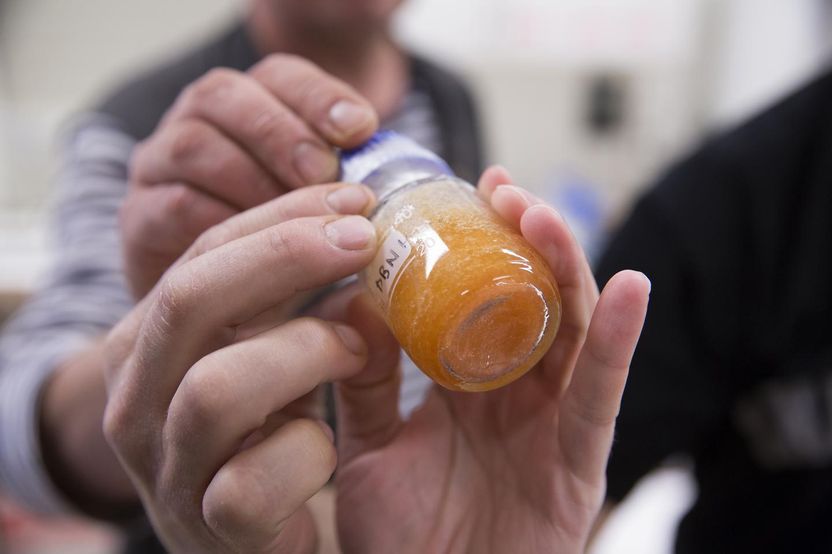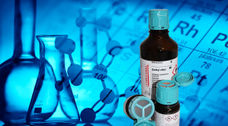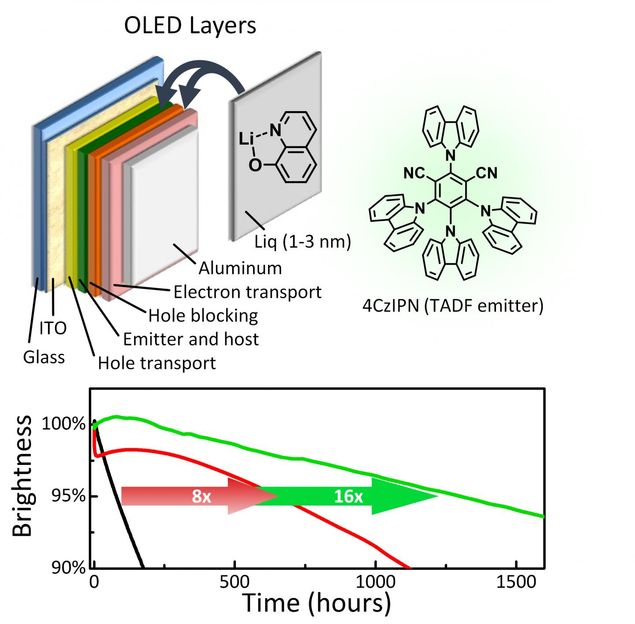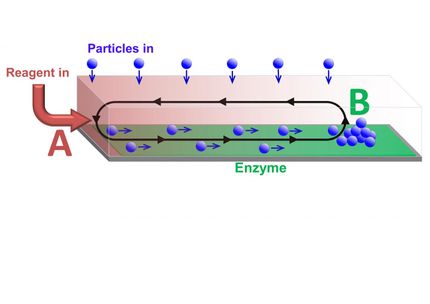Ionic liquids interesting in extracting molecules from wood
Thanks to their unique properties, ionic liquids are all in the rage as solvents as "green" sustainable chemical processes. Recently, two research teams at Umeå University in Sweden discovered how enzymes can perform their catalytical processes in a switchable ionic liquid. The discovery paves way for enzymatic refinement of cellulose to precious molecules and industrial products.

Ionic liquid with unique properties, Umeå University.
Johan Gunséus
Ionic liquids are salts in fluid form at room temperature - compared with regular cooking salt, sodium chloride, which melts at 800 degrees Celsius. This characteristic means that ionic liquids have unique properties making them important solvents for "green" and sustainable chemistry.
In a previous study, the professor in chemistry Jyri-Pekka Mikkolas' research group has discovered that hemicellulose, cellulose and lignin can be selectively separated and dissolved using a new type of so-called switchable ionic liquid. Recently, a team of Magnus Wolf-Watz and Jyri-Pekka Mikkolas research teams have discovered that enzymes can function in this particular ionic liquid. This is far from evident since enzymes have evolved into functioning in water solutions.
"Our discovery is a scientific breakthrough! This is the launch that enables us to extract small key molecules directly from wood. There are many applications not in the least in the production of ethanol as fuel but also a number of other things," says Magnus Wolf-Watz, associate professor at the Department of Chemistry.
The main experimental technology used is NMR, nuclear magnetic resonance spectroscopy. A crucial component in the work has been the development of a completely new method to determine the enzymatic activity. The assay procedure is based on real time measurements of the chemical reaction using 31P NMR spectroscopy. The NMR infrastructure at Umeå University is at international top class and are funded by the Kempe and Wallenberg Foundations.
"This development will be of major importance to the measurement of enzymatic catalysis in complex solutions and preparations, and the method is already being used in new projects," says Jyri-Pekka Mikkola, professor at the Department of Chemistry.
Original publication
Other news from the department science
These products might interest you

ERBAdry by CARLO ERBA Reagents
Anhydrous solvents from CARLO ERBA Reagents in a clever redesign
ERBAdry series impresses with the latest generation of septa and sealing caps

Thermo Scientific™ Dionex™ ASE™ 150 or 350 Accelerated Solvent Extractor systems by Thermo Fisher Scientific
Accelerated Solvent Extraction (ASE) – Maximize results and reduce errors in food analysis!
More extractions in less time using less solvent

Get the chemical industry in your inbox
By submitting this form you agree that LUMITOS AG will send you the newsletter(s) selected above by email. Your data will not be passed on to third parties. Your data will be stored and processed in accordance with our data protection regulations. LUMITOS may contact you by email for the purpose of advertising or market and opinion surveys. You can revoke your consent at any time without giving reasons to LUMITOS AG, Ernst-Augustin-Str. 2, 12489 Berlin, Germany or by e-mail at revoke@lumitos.com with effect for the future. In addition, each email contains a link to unsubscribe from the corresponding newsletter.
Most read news
More news from our other portals
Last viewed contents

“Restore trust and get Bayer on track for better performance” - Three-year process of rejuvenation launched

Lifetime breakthrough promising for low-cost and efficient OLED displays and lights

An AI Robot for Pipetting - Researchers from the University of Freiburg have received an EXIST grant for their goodBot startup




























































